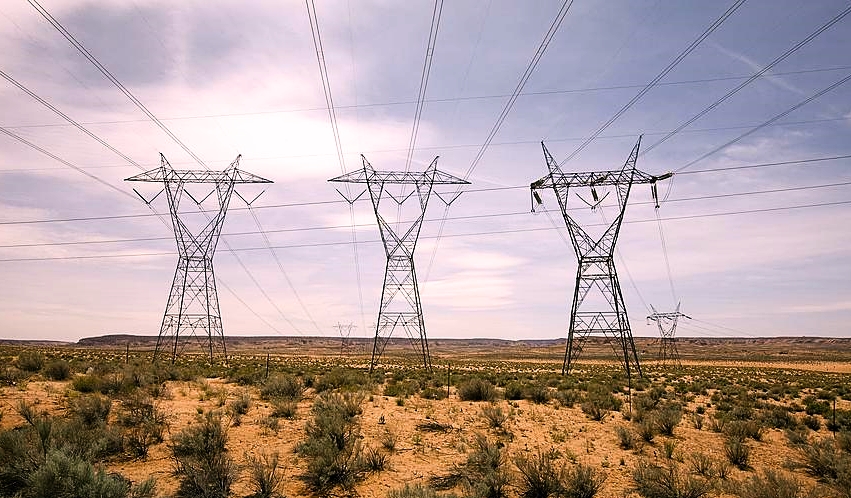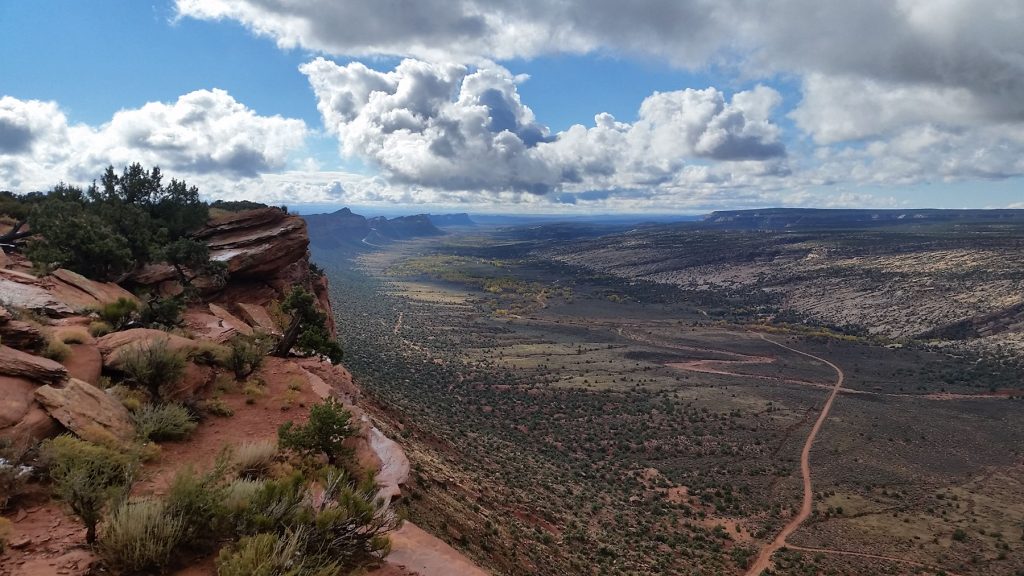Related: San Juan County violates due process with wind farm, sticks taxpayers with $250K legal bill
Is PLI more about transmitting money and power via energy corridors than it is about protecting wilderness?
in cooperation with The Petroglyph
Utah’s Public Land Initiative (PLI), is what many consider to be a proactive measure to thwart the Presidents proposed 1.9 million acre Bears Ears National Monument in San Juan County.
The PLI, crafted by local officials, U.S. Congressmen Rob Bishop and Jason Caffetz, and Governor Gary Herbert of Utah, is designed to consolidate state-controlled lands into energy corridors, and create new wilderness and national conservation areas. PLI is being marketed as the ‘bill to end all land disputes.” According to those promoting the PLI, numerous public meetings have been held in order to ensure maximum public input. Although Bishop and Chaffetz are aware that support for PLI is far from unanimous, they said, in an interview on Inside Utah, that the bill is a good thing for the state.
Despite the PLI hype, it is highly controversial on both sides of the political aisle. Conservative leaders in Utah have claimed it is a sort of ‘deal with the devil,’ which will further erode state sovereignty and access to lands and resources, while those from the environmentalist Left decry it for ‘not going far enough’ to preserve wilderness.
But a closer look at the details and implications of the Public Lands Initiative leads to an unsettling conclusion: This bill is not about protection of the lands, it’s about money and, quite literally, power.
Having researched PLI for over two years, The Petroglyph, a southeastern Utah-based blog focused on land and resource issues, has published several articles revealing the driving forces behind PLI. Under the guise of ‘protection,’ with discussions of wilderness areas and national conservation areas at the forefront, PLI behind the scenes appears to be the means of facilitating a deal between Utah State Lands, big corporations, and the Bureau of Land Management (BLM) that will secure control over vast regions of southeastern Utah.
The following timeline is based on research by The Petroglyph:
THE RELATIONSHIP BETWEEN ENERGY CORRIDORS, FEDERAL LAND AGENCIES and PACIFICORP
Energy Corridors sound great in theory. But it’s important to look at who will benefit most from their implementation. One of the biggest energy companies in the western states, PacifiCorp. Why PacifiCorp? This energy giant has been working with federal and state agencies for over a decade in the design and implementation of policy for energy corridors throughout the West. It’s plans require government control of the lands through which those corridors would flow. The creation of energy corridors gives the federal government greater control over federal lands, which can negatively impact ranching, farming and tourism. The rural economies of several western states, including Utah, depend heavily on agriculture and outdoor recreation.
In 2008 the Designation of 368 Energy Corridors plan was released by the U.S. Department of Agriculture, and it mapped all the energy corridors proposed in the West by federal agencies including the BLM, U.S. Forest Service, Department of Energy, and U.S. Fish & Wildlife. These corridors would directly benefit PacifiCorp, with the eventual goal of giving the energy giant control over all power grids in the West. (Proposed Section 368 Energy Corridors with Major Visual and Cultural Resources-November 2008).
SCHOOL and INSTITUTIONAL TRUST LANDS ADMINISTRATION
The 2009 Utah Recreational Land Exchange Act was passed to expedite the process of exchanging School and Institutional Trust Lands Administration (SITLA) lands in San Juan County and Grand County to the federal government.
In September of 2011 K2O Potash published a map showing the energy corridor that would encompassed land designated for a future potash mine. While San Juan County Commissioner Bruce Adams supported the plan, Commissioner Phil Lyman declined.
On June 18, 2013 Commissioner Bruce Adams presented a proposal from San Juan County for wilderness and conservation lands in a Dine Bikeyah lands bill public meeting.
UTAH STATE LANDS
On August 7, 2013, Utah State Lands presented their own proposal for the PLI, illustrating all SITLA land exchanges and the energy corridors.
On August 9, 2013, Congressmen Bishop and Chaffetz introduced their PLI bill in San Juan County.
With controversy growing around the Public Lands Initiative, as well as rumblings about a proposed 1.9 million acres national monument in the Bears Ears, San Juan County locals organized a citizen lands team to address the issue.
2015: The map presented to the county in 2015 years later looked similar to the one Commissioner Adams present in 2013.
2015-2016: Environmentalists, outdoor recreation corporations and progressive politicians garnerd support for the proposed 1.9 million Bears Ears National Monument. During the same time period, the PLI was pushed by Bishop, Chaffetz and Governor Herbert as the acceptable alternative to the massive federal land grab.
On July 16 2016, Interior Secretary Sally Jewell met with hundreds of ‘supporters’ (most of whom were transported to the event and given t-shirts paid for by environmentalist groups) to discuss the proposed Bears Ears Monument.
On July 27, Utah Senator Mike Lee presided over a hearing in San Juan County, attended by Congressman Bishop, Governor Herbert, Commissioner Bruce Adams, local tribal leaders, and 1,000 opponents of the proposed Bears Ears monument, to discuss the proposed monument and the PLI. Although the vast majority of those who attended the July 27 hearing vigorously opposed the proposed national monument, those in support of the PLI were split, 50/50.
The controversy continues to grow, and to date, neither Interior Secretary Sally Jewell, nor President Obama has moved to give national monument designation to the Bears Ears region of San Juan County. But Bishop, Chaffetz and Herbert continue to tout the PLI–with Herbert going so far as to infer that he would offer yet another alternative plan to ‘protect Bears Ears’–despite swelling disapproval of both the proposed monument and the PLI.
So, why are leaders and activists on both sides of the political aisle insisting on ‘preserving’ what are already remote and pristine regions of southeastern Utah?
It’s not about protecting anything. It’s about a long-term plan to secure money and power. Behind the public controversies, quiet deals are being made that benefit PacfiCorp, Utah State Lands, BLM, and other federal agencies.
This settlement (below) between The Wilderness Society and the U.S. Department of the Interior is representative of how energy corridors play a central role in land disputes.
WWEC — Exhibit a to Settlement AgreementMONTANA
When there are designations of Wilderness, National Conservation Areas, etc., lands under control of the state must be redesignated. If a lands bill or initiative, PLI for example, is enacted, then state lands will be automatically transferred to the federal government for energy corridors.
Renewables, green energy, clean energy, the phasing out of fossil fuels, and other controversies have taken center state in discussions on domestic energy production. But transmission of power, and who controls transmission lines, and the corridors through which those lines will be run, are rarely brought up.
The citizens of San Juan County mounted a massive opposition to the proposed Bears Ears monument, and in doing so have identified the agencies and corporations seeking control over their public lands. Suspicions about PLI are also growing in Utah. Given this unflattering exposure of government/corporate collusion and its impact on Utah and other states, there is an opportunity for concerned citizens to posit the question of what role energy corridors play in land disputes. The fact that government agencies, and a massive corporation, PacifiCorp, want to dominate energy transmission on those disputed public lands, ultimately controlling all transmission of power throughout the West, is a discussion that must be had, sooner rather than later.
Related: San Juan County violates due process with wind farm, sticks taxpayers with $250K legal bill
Free Range Report Admin.



